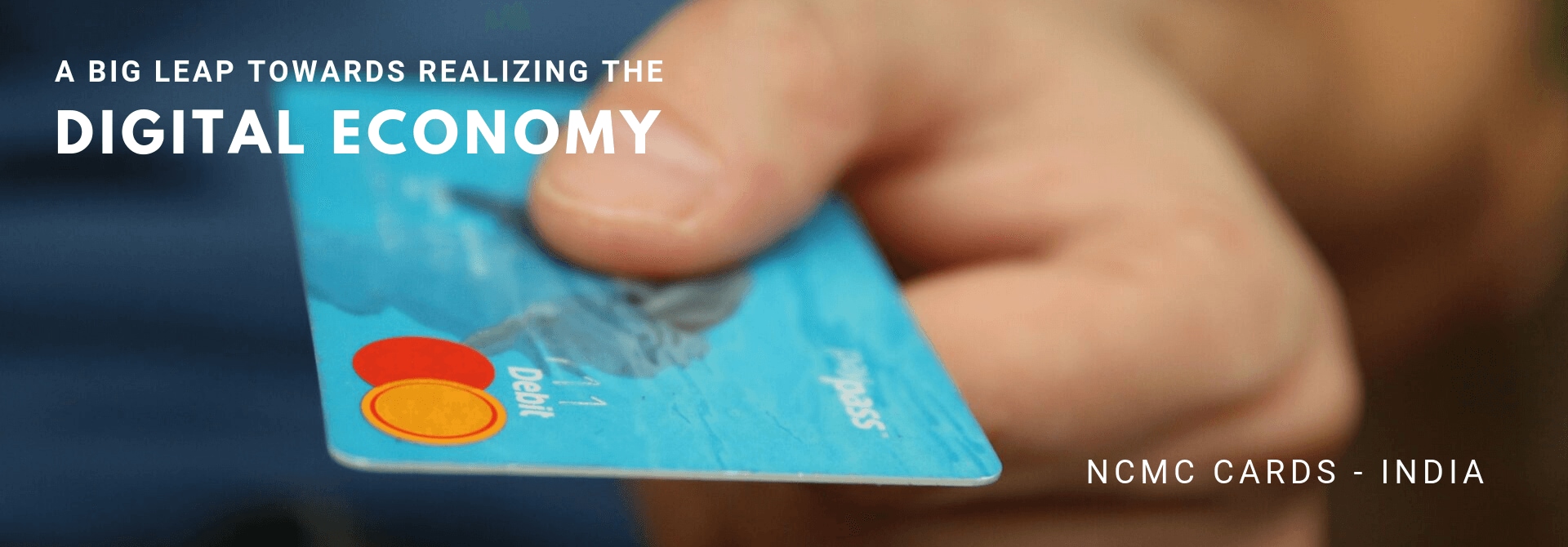Home > Blogs > NCMC – One Nation, One Card
NCMC – One Nation, One Card

A logical next step for the banks; giant leap for the digital economy
As of March 2019, Indian banking ecosystem has over 920 Million debit cards in circulation. That is almost 20 times as many active credit cards in the country. In spite of the great number of cards in circulation, our actual-usage of it is far lesser than desired.
Sadly, each debit card gets used, on an average of 1.4 times a month. Worse still, 7 out of 10 times, the Debit Card is used at an ATM. These statistics from the Reserve Bank of India (RBI) paint a very clear picture.
We Indians, use our debit cards very sparingly, and even when we do, it is mostly to withdraw cash.
ATM & Card Statistics – India:
If our national aspirations of being a digital economy must be realized, this trend of conservative-usage of Debit Cards must be overcome. There is a strong need to articulate new use-cases and roll-out proactive initiatives that promote card based transactions. One such framework/initiative is the National Common Mobility Card (NCMC).
The Infrastructure and applications
Also known as ‘One Nation One Card’, it is regular debit card with the additional capability to make contactless-payments (tap and go) as well. NCMC has the potential to catalyze rapid adoption secure and fast digital payments. The underlying reason, is that it operates on the ‘EMV Open Loop Card with stored value’ model and supports dual interface (contact & contactless).
Let’s understand what it really means (in layman’s terms)
The NCMC framework combines the benefits of both the contact and contactless payments into a single card. Going forward, the RuPay cards built on NCMC framework can be availed from any of the 25+ large banks as either debit, credit or prepaid cards.
Clearly, the intention behind NCMC is to use the same card for several purposes,
Context, Challenges and Impact
In India, 90% of credit card and almost all debit card transactions are domestic in nature. The Two-Factor Authentication (2FA) has been largely successful in averting misuse of cards; especially among the low-literacy customer base. While the 2FA lends the much needed layer of security, it may often create an element of friction that could be done away with.
In the low-internet connectivity areas, insisting on 2FA could be impractical. Ex: Highway Toll-Plazas, underground Metro stations, cafeterias etc. Even in areas with strong internet-connectivity, the 2FA might cause delay and holdup for small transactions. Ex: Cafeteria, Bus, Tolls etc.
The NCMC has potential to overcome these challenges and deliver value in three ways,
The RBI has waived-off the need for 2FA for contactless cards as well as for online card not present (CNP) payments less than Rs. 2,000.
These transactions can be done without keying in any additional PIN or OTP.
Of the 920 Million debit-cards in the country today, only 15 Million are estimated to be NFC (contactless) enabled. Also, of the 3.7 Million POS terminals, about 900,000 can support NFC payments. This shows the gap and also the opportunity to accelerate digital payments.
The road to implementation of NCMC will have its fair share of challenges. The success of this ambitious initiative depends on several factors, including,
Conclusion
Transport for London (TfL), the integrated transport authority for London has enabled contactless payments on their buses and trams. They found that the once the contactless cards were introduced, the adoption of digital payments more than doubled. Today, TfL supports Apple Pay, Barclaycard Contactless Mobile, bPay, Fitbit Pay, Garmin Pay, Google Pay and Samsung Pay.
In future, NCMC cards could also be made available as wearable-accessories. Considering the Indian urban commuter, there is a potential to at least triple the number of card-transactions in the near future. After the success of UPI and RuPay platforms, the NCMC framework may just be the next big blockbuster in the Indian payments ecosystem.


Jayanth Jagadeesh
Product Marketing, Infosys Finacle
Jayanth is a Product Marketing manager with Infosys Finacle. He is passionate about digital-platforms that facilitates exceptional customer-experiences. He writes about customer engagement, emerging technologies and business of technology. Outside of work, he is a reader, biker and a movie-buff.
More blogs from Jayanth >